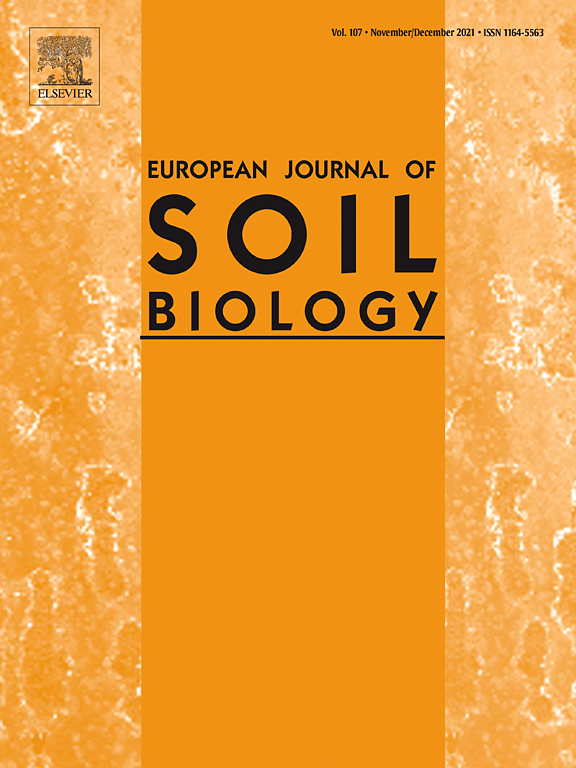Ver ítem
- xmlui.general.dspace_homeCentros Regionales y EEAsCentro Regional Salta - JujuyEEA SaltaArtículos científicosxmlui.ArtifactBrowser.ItemViewer.trail
- Inicio
- Centros Regionales y EEAs
- Centro Regional Salta - Jujuy
- EEA Salta
- Artículos científicos
- Ver ítem
Changes in microbial and physicochemical properties under cover crop inclusion in a degraded common bean monoculture system
Resumen
The expansion of the common bean monoculture system along with intensive agricultural practices focused on productivity has generated a misuse of natural resources, accompanied by a significant decline of the soil ecosystem services. The aim of this study was to analyze the short-term effect (3 years) of the inclusion of different cover crops (legumes, non-legumes and mixtures) on the physicochemical, biological properties and crop yield in a degraded
[ver mas...]
The expansion of the common bean monoculture system along with intensive agricultural practices focused on productivity has generated a misuse of natural resources, accompanied by a significant decline of the soil ecosystem services. The aim of this study was to analyze the short-term effect (3 years) of the inclusion of different cover crops (legumes, non-legumes and mixtures) on the physicochemical, biological properties and crop yield in a degraded common bean monoculture system in the north region of Argentina. The inclusion of legumes (vetch and melilotus) and non-legumes (oat and wheat) as sole cover crops over three consecutive years significantly increased the abundance of the main microbial groups, microbial biomass C and N (MBC and MBN) and the activity of the common bean rhizosphere microbial community, which resulted into a fast improvement of soil quality and rhizosphere microbiota compared with bean monoculture. However, mixed cover crops (oat + vetch) had a positive but lower impact on rhizosphere microbial community abundance compared to legume or non-legume cover crops when used as sole cover crops. The information generated in this study will contribute to the evaluation of the inclusion of specific cover crops as a conservation strategy to recover soil health and minimize soil degradation, while maintaining crop yields.
[Cerrar]

Autor
Aban, Carla Luciana;
Perez Brandan, Carolina;
Verdenelli, Romina Aylen;
Huidobro, Dina Jorgelina;
Meriles, José Manuel;
Vargas Gil, Silvina;
Fuente
European Journal of Soil Biology 107 : 103365 (November–December 2021)
Fecha
2021-12
Editorial
Elsevier
ISSN
1164-5563
Documentos Relacionados
Formato
pdf
Tipo de documento
artículo
Proyectos
(ver más)
INTA/2019-PD-E2-I037-002/2019-PD-E2-I037-002/AR./Biodiversidad edáfica: componente clave para una gestión integral y sustentable del recurso suelo
Palabras Claves
Derechos de acceso
Restringido
 Excepto donde se diga explicitamente, este item se publica bajo la siguiente descripción: Creative Commons Attribution-NonCommercial-ShareAlike 2.5 Unported (CC BY-NC-SA 2.5)
Excepto donde se diga explicitamente, este item se publica bajo la siguiente descripción: Creative Commons Attribution-NonCommercial-ShareAlike 2.5 Unported (CC BY-NC-SA 2.5)

